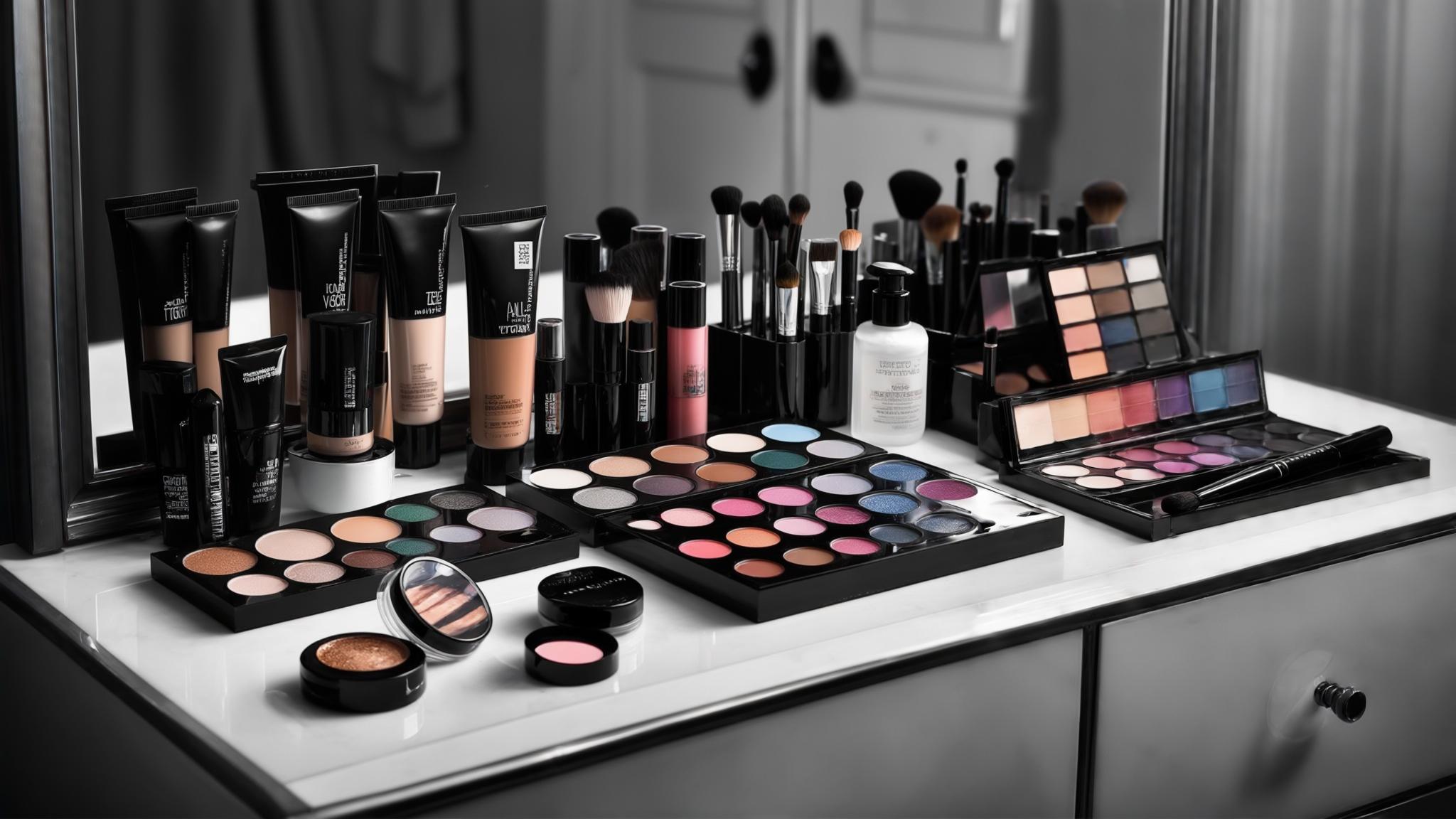
In 2018, Maybelline hit a remarkable 7.4% global market share, crushing competitors like L’Oréal Paris, MAC, and Lancôme while grabbing 11% of total mass cosmetics sales on Amazon. “Maybelline Case Study Analysis Marketing Competitors” StudyCorgi. This didn’t just happen overnight. Maybelline basically threw out the beauty marketing playbook and started from scratch, and somehow it actually worked.
Table of Contents
-
Digital Marketing Revolution: Breaking Beauty’s Traditional Rules
-
Market Intelligence: Reading the Room in a Crowded Beauty Space
-
Implementation Playbook: Turning Strategy into Results
-
Agency Applications: What This Means for Your Marketing Game
TL;DR
-
Maybelline broke gender barriers by partnering with male beauty influencers, which was risky as hell but totally paid off
-
They created platform-specific content instead of copy-pasting the same stuff everywhere
-
Educational content made them the go-to beauty authority, not just another brand pushing products
-
They found the sweet spot between drugstore prices and premium feel
-
Data tracking helped them figure out what actually worked (and what didn’t)
-
Everything felt connected across platforms without being repetitive
Digital Marketing Revolution: Breaking Beauty’s Traditional Rules
Here’s the thing about Maybelline – they didn’t just follow digital trends, they actually created them. While other beauty brands were playing it safe with the same old playbook, Maybelline decided to shake things up. And honestly? It’s pretty impressive to watch a traditional beauty company reinvent itself without losing what made it special in the first place.
Now they’ve got Miley Cyrus updating their old jingle, which honestly makes perfect sense when you think about it. As “Maybelline taps pop icon Miley Cyrus to modernize its legendary jingle” ContentGrip reports, this partnership represents “a full-scale reinvention of brand identity, with Maybelline leaning into a culture-first strategy rather than product-first messaging.”
Game-Changing Campaigns That Rewrote Beauty Marketing
Here’s what I noticed about their best campaigns – they all did something that made people go “wait, what?” Instead of playing it safe with pretty models and soft lighting, these campaigns actually started conversations. Each breakthrough moment built on the last one, creating this snowball effect that positioned Maybelline as the brand willing to take risks.
|
Campaign Element |
Traditional Approach |
Maybelline’s Innovation |
Results |
|---|---|---|---|
|
Target Audience |
Women 18-35 |
Inclusive: All genders, ages 14-24 focus |
Expanded market reach |
|
Influencer Partnerships |
Female beauty gurus only |
Male influencers (Manny MUA) |
Broke gender barriers |
|
Platform Strategy |
One-size-fits-all content |
Platform-specific optimization |
Higher engagement rates |
|
Messaging Focus |
Product features |
Authentic self-expression |
Stronger emotional connection |
The Male Influencer Partnership That Changed Everything
The Manny MUA thing was genius. Sure, it was risky as hell, but that’s exactly why it worked. When Maybelline partnered with him, they weren’t just hiring another influencer – they were basically saying “yeah, makeup is for everyone, deal with it.”
I remember when this partnership first made waves. The beauty industry had been tiptoeing around male makeup users for years, scared to make the first move. But Maybelline dove in headfirst. Manny wasn’t just promoting products; he was representing this whole shift in how we think about beauty and who gets to participate in it.
The results? Engagement rates went through the roof, and more importantly, younger consumers actually started paying attention. This wasn’t some PR stunt – it became the blueprint for how beauty brands could expand their reach without looking fake about it.

Platform-Specific Content That Actually Works
Being everywhere isn’t the same as being everywhere smartly. Your Instagram can’t just be a copy-paste of your YouTube – that’s lazy marketing. Maybelline figured this out early and crafted content that felt native to each platform instead of just dumping the same stuff everywhere.
Instagram became their visual storytelling hub with all those perfectly curated looks. TikTok turned into their experimental playground where they could test weird trends and see what stuck. YouTube was their tutorial central, where they could really dive deep into techniques and product education.
What worked on TikTok would totally flop on Instagram, and vice versa. Maybelline mastered this by treating each platform like its own unique conversation rather than just another place to blast their message.
Their #BeforeWomenGetReady campaign in India shows how this platform-specific approach pays off – reaching 13 million people digitally, generating 4 million PR impressions, and selling 75,000 units in just one month. “Marketing Strategy of Maybelline” IIDE. The campaign worked because they tailored everything to each platform’s unique vibe while keeping their core message consistent.
Inclusive Messaging That Actually Means Something
Look, we’ve all seen brands jump on the diversity bandwagon just because it’s trendy. Maybelline’s different because they didn’t just change their ads – they changed their entire approach. They expanded shade ranges, featured models of different ages and backgrounds, and created campaigns that spoke to various beauty experiences.
But here’s what made it work: they didn’t just talk about inclusivity in their marketing – they actually followed through with their products and business decisions. When consumers could see that Maybelline’s commitment wasn’t just marketing speak, it built real trust.
This consistency between what they said and what they did is what separated them from brands that just slapped diverse faces on the same old campaigns.
Strategic Brand Positioning in a Competitive Market
Talk about walking a tightrope. Go too cheap and people think your stuff sucks. Go too expensive and suddenly you’re not drugstore anymore. Maybelline found this sweet spot by delivering quality that feels more expensive than it actually is.
Back in 2000, Maybelline became the biggest spender in cosmetics advertising, showing they were serious about building brand awareness. “Maybelline Case Study Analysis Marketing Competitors” StudyCorgi. This investment paid off by creating brand awareness that people actually valued, with products like their eye shadow and eyeliner becoming category leaders.
The Price Point Balancing Act
Here’s where it gets tricky. Maybelline had to maintain their mass-market appeal while competing against luxury brands that charge three times as much. Their solution? Strategic tiering.
Some product lines get the luxury treatment with fancy packaging and premium formulas, while others stay accessible to their core drugstore shoppers. This lets them capture different market segments without confusing their brand identity.
The key insight? You don’t have to choose between premium and accessible – you can be both if you’re smart about it.

Content Marketing That Educates and Sells
Nothing beats content that actually helps people instead of just pushing products. Maybelline positioned themselves as beauty educators first, product sellers second. This approach builds trust because people feel like they’re getting value, not just a sales pitch.
Effective content marketing requires understanding what your audience actually wants to know. The Marketing Agency’s guide on high-impact blog topics shows similar educational approaches that work across industries.
Educational Content That Builds Authority
Their tutorials don’t just show you how to apply makeup – they teach you why certain techniques work and when to use them. This depth of information builds confidence in both the brand and the person’s ability to actually achieve the look.
The educational approach also creates multiple touchpoints with potential customers. Someone might discover Maybelline through a contouring tutorial, then explore their foundation range, and eventually become a loyal customer across multiple product categories.
It’s this kind of helpful content that transforms casual browsers into actual customers.
Content Marketing Checklist:
-
Create step-by-step tutorials for each product category
-
Develop seasonal beauty guides aligned with trends
-
Produce problem-solving content addressing common beauty concerns
-
Establish consistent posting schedule across platforms
-
Include clear product demonstrations in educational content
-
Respond to user questions and comments promptly
-
Track engagement metrics to optimize content performance
User-Generated Content That Builds Community
Nothing beats seeing real people actually using the products. Those perfectly lit ads? Yeah, nobody believes those anymore. Maybelline’s user-generated content strategy turns customers into brand advocates by showcasing authentic experiences instead of polished perfection.
Real customers sharing their Maybelline looks carries way more weight than any professional advertisement. These authentic moments show products working across different skin tones, ages, and skill levels – something traditional advertising just can’t replicate.
The brand actively encourages this content through hashtag campaigns and features the best submissions. This creates a feedback loop where customers feel valued and recognized, which encourages even more people to share their experiences.
Cross-Platform Content Adaptation Mastery
A single product launch might become an Instagram carousel, a TikTok trend, a YouTube tutorial, and a Twitter conversation – each optimized for its specific platform while keeping the core message consistent.
This adaptation requires deep platform knowledge and creative flexibility. What resonates on one platform might need complete restructuring for another, but the underlying brand values and product benefits stay the same.
The trick is understanding each platform’s unique language and audience expectations, then adapting your message accordingly without losing what makes it authentically yours.

Market Intelligence: Reading the Room in a Crowded Beauty Space
Understanding what’s happening in the beauty world requires constant vigilance. Maybelline’s success comes from their ability to spot trends early and respond strategically. They don’t just react to what’s happening – they anticipate what’s coming next by watching consumer behavior, competitor moves, and cultural shifts that influence beauty preferences.
Competitive Landscape Navigation
Instead of trying to beat competitors at their own game, Maybelline found ways to play a different game entirely. They carved out unique positioning that let them compete effectively against both drugstore and luxury brands by occupying this sweet spot that others weren’t targeting.
Comprehensive competitive analysis requires systematic approaches. The Marketing Agency’s competitive response framework provides similar methodologies for monitoring and responding to competitive threats.
Direct Competitor Analysis Deep Dive
L’Oréal Paris goes for affordable luxury, Revlon focuses on classic beauty with modern updates, and CoverGirl emphasizes everyday wearability. Instead of trying to beat each one at their specialty, Maybelline carved out their niche by combining trend-forward innovation with inclusive messaging.
Each competitor has distinct strengths that Maybelline had to navigate around. Rather than going head-to-head on every front, they picked their battles strategically.
The key insight here? You can’t win at everything, and honestly, you don’t need to. Just crush it at the stuff your customers actually care about.
|
Competitor |
Market Position |
Key Strengths |
Maybelline’s Counter-Strategy |
|---|---|---|---|
|
L’Oréal Paris |
Affordable luxury |
Premium perception, R&D |
Trend-forward innovation + inclusivity |
|
Revlon |
Classic beauty |
Heritage, reliability |
Modern edge + digital-first approach |
|
CoverGirl |
Everyday wearability |
Accessibility, simplicity |
Bold experimentation + community building |
|
MAC |
Professional quality |
Artist credibility |
Mainstream accessibility + education |
Consumer Behavior Evolution
Younger shoppers are just wired differently. They’ll watch seventeen TikToks about a mascara before buying it, and they actually care if brands share their values. Maybelline adapted to these changing preferences without alienating their existing customers, which is honestly pretty impressive.
The 14-24 age group represents the biggest consumers of Maybelline’s beauty brands, making them crucial trendsetters. “Maybelline Case Study Analysis Marketing Competitors” StudyCorgi. This demographic’s tech-focused nature lets Maybelline reach them through strategic campaigns across social media platforms where teenagers and young adults actually spend their time.
Demographic Shift Response Strategy
Gen Z and millennial consumers research products differently, shop through different channels, and make decisions based on completely different criteria than previous generations. They want to see themselves represented in advertising, they value authenticity over perfection, and they’re willing to pay more for products that align with their values.
Maybelline adapted by featuring diverse models, partnering with authentic influencers, and creating products that address real beauty concerns rather than perpetuating unrealistic standards.
The brand understood that these consumers don’t just buy products – they buy into brands that represent their values and aspirations.

Purchase Decision Factor Analysis
These days, if your friend doesn’t post about it, did it really happen? Social proof is everything now. Modern beauty purchase decisions are heavily influenced by social media recommendations, peer reviews, and whether the brand’s values align with the consumer’s.
Maybelline leverages this by creating authentic moments where real people share genuine experiences with their products. These moments happen across social platforms, in user-generated content, and through influencer partnerships that feel natural rather than forced.
The shift from traditional advertising to social proof has completely changed how beauty brands need to think about marketing and customer acquisition.
Look at their innovative approach with the Twitch collaboration for Colossal Curl Bounce mascara. “How Twitch and Maybelline combined two industries” The Drum reports this interactive gaming stream achieved almost 85,000 minutes watched, 86% video completion rate, and 100% products sold out. They successfully tapped into female gamers – a segment most beauty brands completely ignore.
Implementation Playbook: Turning Strategy into Results
Converting good ideas into actual results requires systematic approaches that balance creative innovation with data-driven decision making. Maybelline’s implementation success comes from their structured methodology that turns strategic thinking into campaigns that actually work and deliver measurable results.
Campaign Development Process Breakdown
Successful campaigns don’t just happen – they follow a structured process that starts with deep market research and evolves through creative strategy development. Maybelline’s approach shows how systematic planning and execution create campaigns that resonate with target audiences while achieving real business objectives.
Systematic campaign development requires understanding market opportunities. The Marketing Agency’s market sizing guide provides similar frameworks for evaluating potential campaign reach and business impact.
Market Research and Insights Gathering Framework
Comprehensive market research forms the foundation of campaigns that actually work by providing deep understanding of what consumers need, what competitors are doing, and what trends are emerging.
Steps to Take:
-
Conduct focus groups with target demographics – I’ve seen how powerful these sessions can be when done right. You’re not just asking what people want; you’re observing how they interact with products and what emotions drive their decisions.
-
Analyze social media trends and conversations – This goes beyond hashtag tracking. You need to understand the context behind trending topics and how they relate to beauty culture and consumer behavior.
-
Study competitor campaign performance metrics – Don’t just look at what competitors are doing—analyze what’s working and what isn’t. Engagement rates, share patterns, and comment sentiment tell the real story.
-
Identify emerging beauty trends and cultural movements – The best campaigns tap into cultural moments before they become mainstream. This requires constant monitoring of fashion weeks, celebrity culture, and social movements.

Creative Strategy Development That Connects
Translating market insights into compelling creative concepts requires balancing data-driven insights with emotional storytelling. You need campaigns that feel authentic to your brand while speaking directly to what your audience actually cares about.
Steps to Take:
-
Define campaign objectives and key performance indicators – Vague goals lead to mediocre results. Specific, measurable objectives guide every creative decision and provide clear success metrics.
-
Develop brand messaging that aligns with consumer values – Your messaging needs to feel authentic to your brand while speaking directly to what your audience cares about. This alignment creates emotional connections that drive loyalty.
-
Create multi-platform content strategies – Each platform requires different content approaches, but the core message should remain consistent. Think about how your story unfolds across different touchpoints.
-
Design influencer partnership criteria and guidelines – Not every influencer is right for your brand. Clear criteria ensure partnerships feel authentic and deliver results that align with your objectives.
Maybelline’s “Lì 2.0: Empowering Gen Z with Daring Makeup Transformations” campaign used over 300 key opinion consumers (KOCs) on TikTok, resulting in 54 million views and 9.5 million earned views. The campaign achieved four times return on ad spend (ROAS) compared to the norm and a 2.5 times increase in orders. That’s what happens when systematic creative strategy actually translates into measurable business results.
Performance Measurement and Optimization Systems
Here’s the tricky part about measuring success in beauty – sometimes the best campaigns don’t show results for months. Effective measurement goes beyond vanity metrics to focus on business impact and understanding the complete customer journey.
Attribution Modeling Implementation
Tracking customer journeys sounds boring, but it’s actually fascinating. People don’t just see an ad and buy something anymore – they bounce around like pinballs before making a decision. Understanding this complete journey requires sophisticated tracking that connects all the dots.
Setting up attribution modeling isn’t just about installing tracking codes – it’s about understanding how customers actually discover and engage with your brand. The beauty customer journey often involves multiple touchpoints across weeks or months before purchase.
Maybelline’s approach tracks everything from initial social media exposure through final purchase, identifying which touchpoints contribute most to conversions. This data reveals surprising insights about which channels deserve more investment and which aren’t pulling their weight.
Attribution Modeling Checklist:
-
Implement cross-platform tracking pixels
-
Set up conversion goals for each campaign objective
-
Create customer journey mapping documentation
-
Establish baseline metrics for comparison
-
Configure multi-touch attribution models
-
Schedule regular attribution analysis reviews
-
Document insights and optimization recommendations
ROI Analysis Framework Development
True ROI measurement in beauty marketing goes beyond immediate sales. Brand awareness, customer acquisition cost, and lifetime value all factor into the complete picture of campaign success. You need frameworks that account for different campaign objectives – awareness campaigns might not drive immediate sales but could significantly impact future purchase decisions.
Maybelline’s approach measures both immediate and delayed conversion impacts, understanding that a tutorial viewed today might influence a purchase decision three months from now.
The framework needs to balance short-term performance metrics with longer-term indicators like brand awareness and customer lifetime value to ensure marketing investments drive sustainable business growth rather than just immediate sales spikes.

Digital Channel Integration Excellence
Coordinating marketing efforts across multiple digital platforms creates cohesive brand experiences that maximize reach and impact. The key is ensuring consistent messaging while optimizing for each platform’s unique characteristics and audience expectations.
Omnichannel Strategy Execution
Omnichannel isn’t just about being present everywhere – it’s about creating connected experiences that add value at each touchpoint. A customer might discover a product on TikTok, research it on YouTube, and purchase it in-store, with each interaction building toward the final decision.
Maybelline ensures that messaging, visual identity, and product information remain consistent across all touchpoints while optimizing presentation for each channel’s unique characteristics and audience expectations.
This integration drives higher engagement and conversion rates because customers get a seamless experience that feels helpful rather than repetitive or overwhelming.
Their Baby Lips lip balm product launch demonstrates effective omnichannel execution, with the crowd-sourced “KISS Song” campaign earning 250,000 views in only 4 days on YouTube. “Maybelline Case Study Analysis Marketing Competitors” StudyCorgi. The campaign seamlessly integrated across multiple platforms while maintaining consistent brand messaging, showing how coordinated digital efforts amplify individual channel performance.
Agency Applications: What This Means for Your Marketing Game
The Maybelline case study provides actionable insights that work across various industries and client situations. These aren’t just beauty-specific tactics – they’re strategic principles about authentic audience connection, data-driven optimization, and multi-channel integration that apply when adapted thoughtfully to different business contexts.
Client Strategy Development Using Maybelline Insights
The key insights about authentic audience connection, data-driven optimization, and multi-channel integration apply across industries when you understand the underlying frameworks rather than just copying specific tactics. This approach helps agencies develop more effective strategies that drive measurable results for diverse client needs.
Developing comprehensive client strategies requires systematic approaches. The Marketing Agency’s advanced case study success strategies provides similar frameworks for creating measurable marketing outcomes across different industry contexts.
Budget Allocation Optimization Framework
Look, figuring out where to spend your marketing budget isn’t rocket science, but it’s not exactly simple either. You need to know what works, who you’re talking to, and what you’re actually trying to achieve. Using Maybelline’s multi-channel approach as a framework helps guide investment decisions across various marketing channels.
Steps to Take:
-
Assess client’s current market position and competitive landscape – Understanding where your client stands relative to competitors informs strategic decisions about where to focus marketing efforts and budget allocation.
-
Identify target audience demographics and behavior patterns – Deep audience analysis reveals which channels and messaging approaches will deliver the best results for your specific client situation.
-
Allocate budget based on channel effectiveness and client objectives – Different business goals require different channel mixes. Brand awareness campaigns need different approaches than direct response marketing.
-
Implement attribution modeling to track cross-channel performance – Without proper tracking, you’re flying blind. Attribution modeling reveals which marketing efforts actually drive business results.
I tell my clients all the time – you need some quick wins to keep the lights on, but you also need to play the long game. Maybelline gets this balance right. The beauty industry’s complexity mirrors many other industries where customers research extensively before purchasing.

Agency Client Strategy Template:
Client Assessment Phase:
-
Conduct competitive landscape analysis
-
Identify unique value propositions
-
Analyze current marketing performance
-
Define target audience segments
Strategy Development Phase:
-
Set SMART campaign objectives
-
Select optimal channel mix
-
Create content strategy framework
-
Establish measurement protocols
Implementation Phase:
-
Launch coordinated campaigns
-
Monitor real-time performance
-
Adjust tactics based on data
-
Report results and insights
Connection to The Marketing Agency
The Maybelline case study perfectly aligns with The Marketing Agency’s data-driven approach to digital marketing success. Just as Maybelline transformed their market position through strategic channel optimization and authentic audience engagement, we help clients achieve measurable ROI across their marketing investments.
Our PPC services can leverage Maybelline’s influencer partnership model through targeted campaigns that capitalize on trending conversations and viral content opportunities, driving immediate user acquisition for clients needing short-term traction.
For maximizing ROI from existing customers, our email marketing strategies incorporate Maybelline’s educational content approach, providing valuable insights that increase customer lifetime value while promoting repeat purchases.
Our comprehensive inbound marketing services mirror Maybelline’s omnichannel strategy, creating consistent touchpoints that guide prospects from awareness through purchase, using the same attribution modeling principles that make campaigns measurable and optimizable.
Ready to stop gambling on marketing and start thriving on proven strategies? We can discuss how to apply these insights to your specific business challenges.

Final Thoughts
Look, platforms will come and go, trends will change, but the basics never do. Be real with people, pay attention to what works, and actually care about your customers. Maybelline figured this out, and that’s why they’re still winning.
What I love about what Maybelline did is they weren’t afraid to look stupid. Most brands are so scared of making a mistake that they never do anything interesting. Partnering with male influencers wasn’t a safe choice back in 2017, but it paid off because they understood their audience better than their competitors did.
That kind of insight-driven risk-taking separates successful brands from those that play it safe and get left behind. Maybelline’s transformation from traditional beauty advertiser to digital marketing innovator didn’t happen overnight – it came from consistently challenging industry norms while staying focused on what actually drives results.
The lessons here work whether you’re selling cosmetics or consulting services. The fundamental principles remain the same: understand your audience deeply, create content that provides genuine value, and measure everything so you can optimize continuously.
Bottom line? Maybelline figured out something most beauty brands are still struggling with – people want to feel seen and understood, not sold to. They took some risks, made some bold moves, and it paid off big time. The best part? These same principles work whether you’re selling lipstick or lawn mowers.



